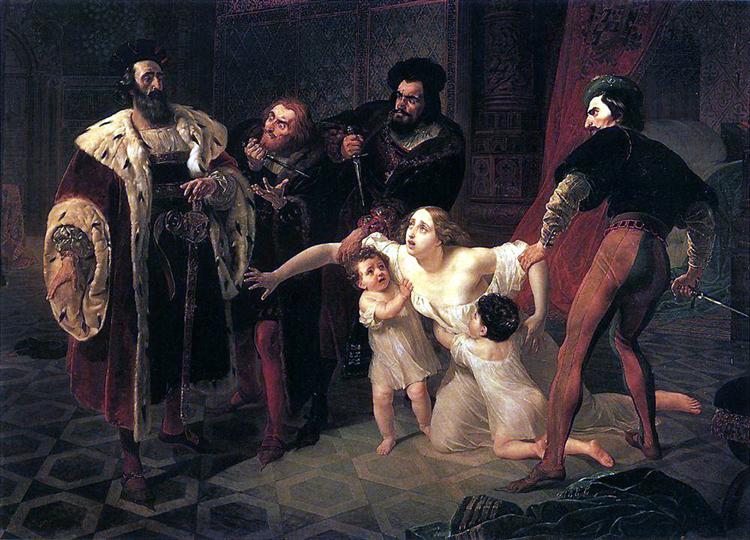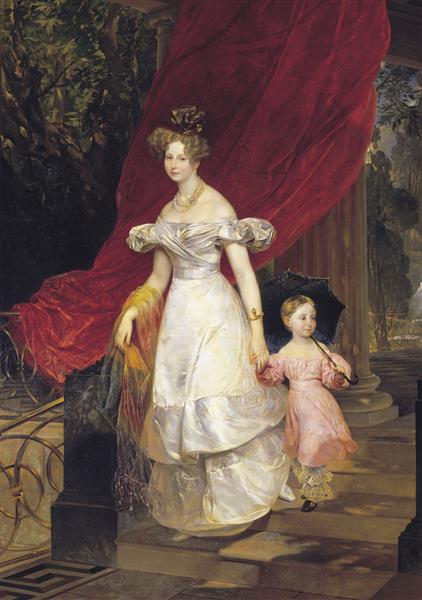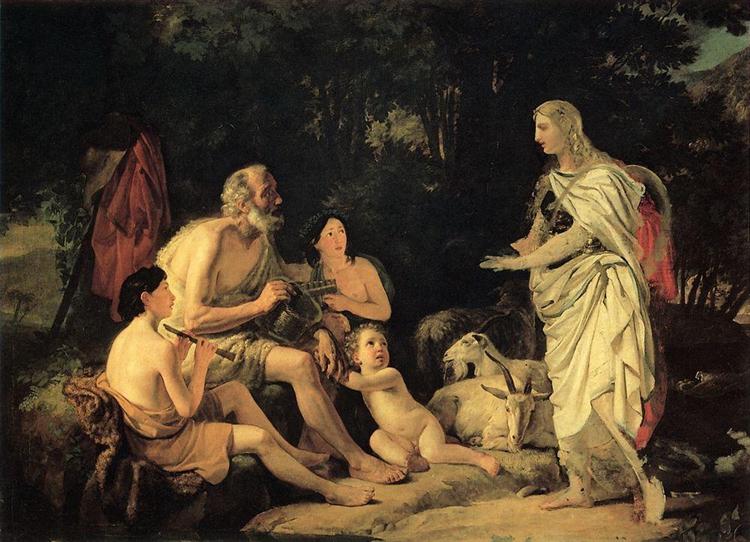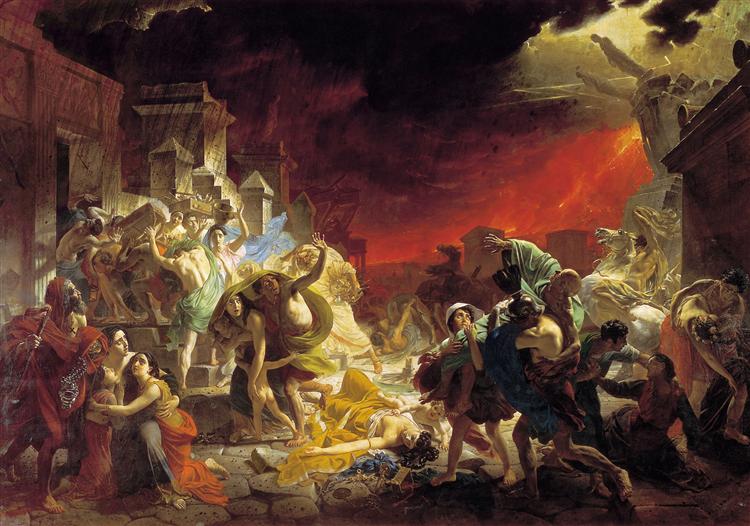
Returning to Italy, to Milan, shortly before the opening of the local exhibition, Bryullov at one of the high society receptions was offended by the remark that, with all his genius, he would hardly have time to write a new work for the exhibition. He locked himself in the empty room of the Brera Palace and did not leave it until seventeen days later the painting “Death of Inessa de Castro” was ready. This canvas embodied the impressions of the painting of Paul Delaroche, whose painting “Lady Jane Gray and Her Executioners” was exhibited in the same Paris Salon in 1834. Delaroche specialized in writing costumed historical melodramas, in which historical heroes were presented as suffering “just people” appealing to the viewer’s sympathy. The Delarochevo line in historical painting lasted throughout the 19th century, and it was Bryullov who stood at the beginning of its Russian version.
The plot is taken from the Lusiada poem by the Portuguese poet of the 16th century Luis Camões, by the way, very popular with romantics. The heir to the Portuguese throne, after the death of his first wife, secretly married Inessa de Castro. The king ordered her to be killed, and the courtiers stabbed the Infanta’s wife in the bedroom in front of the young children. A terrifying scene: grabbing and preparing to stab a woman who has fallen to her knees in front of the king. Two tiny children huddle up to her. The costumes of male characters, for all their theatricality, claim to be historic; similar attire can really be seen in the painting of the 16th century. In the mise-en-scene composed by Bryullov, four men against one woman with small children, a cry, naked daggers, goggle eyes, passions, as they say, are torn to shreds – like a tragedy played out by actors of a provincial theater and designed for an undemanding taste. Everything is on the brink of defiant vulgarity: “Do you want Delaroche? – here you are Delaroche! “. If a frontal comparison of Bryullov’s composition with the above-mentioned picture of Delaroche was possible, then Delaroche in it is grace itself, music, tact, and finally, psychological subtlety and observation.
Having painted the picture in record time (by the way, in terms of pictorial finishing, this is one of his most complete works), Bryullov won the duel with the high-society Milanese bully, but not with Delaroche, the art certainly lost. At some point, a suspicion creeps in whether this is on the part of Bryullov a kind of hoax, a hoax, whether he has composed a parody, a caricature of “something like Delaroche.” (By the way, Bryullov often drew cartoons and in his artistic circle had a reputation as a very venomous caricaturist.) The response of one of the Italian critics is curious in this respect: “This is an agile painter who seduces, deceives, but agility, taken to the extreme, sometimes hurts him, how it hurt in Inessa. The memoirist, referring to the kind of injections that Bryullov was sometimes subjected to, remarks: “The Milan old-timers still remember well the incident that prompted Bryullov to write Inessa de Castro, and, listening to criticism about her, they say with a smile:“ It’s all good, but try to paint such a picture in seventeen days. ” Perhaps Bryullov himself viewed his opus as an eccentric trick – in any case, this experience of a historical costume drama from the life of tsars and queens, taking place in the shadows, behind the curtains of the front apartments, did not receive any response either in the work of Bryullov himself or in the Russian painting for the next three decades.
Year of painting: 1834.
Dimensions of the painting: 213 x 299.5 cm.
Material: canvas.
Writing technique: oil.
Genre: literary painting.
Style: romanticism.
Gallery: State Tretyakov Gallery, Moscow, Russia.


